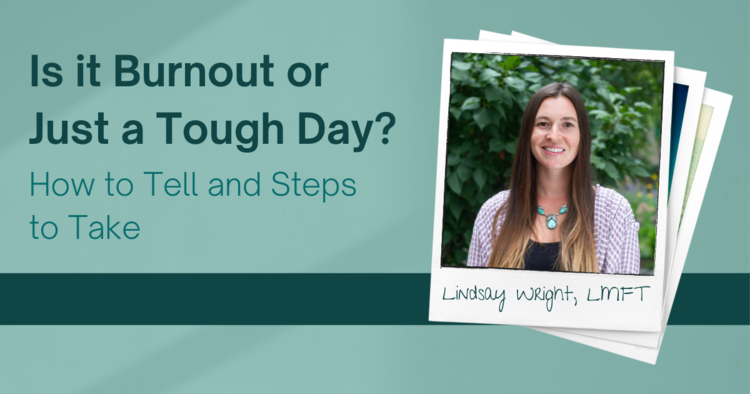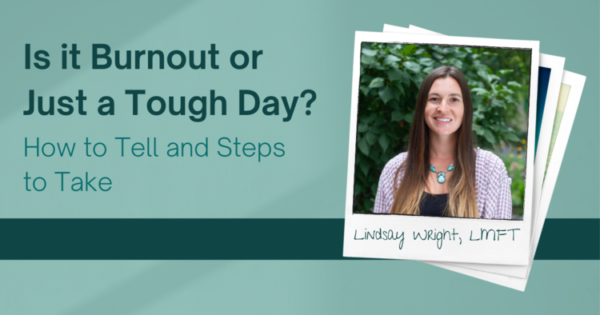
26 Mar Telluride Med Center: Burnout or Just a Tough Day? How to Tell!
Support the Telluride Medical Center’s COVID Fund here.
Register for vaccine here.
For more information surrounding the state’s COVID-19 dial, visit here.
For additional Telluride Medical Center (TMC) information on COVID, go here
The following is a note from the Telluride Med Center’s Licensed Behavioral Health Counselor, Lindsay Wright, about how to tell the difference between burnout or just a tough day.
For more in-depth information, consider reading Burnout by Emily Nagoski, PhD, Amelia Nagoski, DMA, or seeking out help from your primary care provider or a mental health professional.
If you need additional support in managing your physical or mental wellbeing, please reach out to me or your primary care provider. Lindsay Wright can be reached by calling the Telluride Medical Center at 970-728-3848, or if you are patient of the Medical Center, by messaging her through the patient portal. If you are experiencing a mental health crisis, please reach out to Colorado Crisis Line at 844-493-8255.

I’m Lindsay Wright, LMFT, one of the Behavioral Health Counselors at the Telluride Regional Medical Center. It’s now the middle of March, and we’ve seen some great ski days with beautiful snow that have helped us remember and celebrate the reasons that we live here. With this lovely winter season, of course comes visitors, who fill the mountain, restaurants and shops. While we of course love our visitors, the times of high tourism can be stressful to many and can lead to overworking and feelings of burnout at work.
Burnout is a term that you may have heard over the past few years, but to make sure we’re all on the same page, I’ll define it. The Mayo Clinic describes job burnout as “a special type of work-related stress – a state of physical or emotional exhaustion that also involves a sense of reduced accomplishment and loss of personal identity.”
Although burnout is not a medical diagnosis, it can have an impact on both our physical and mental health, and has been correlated to serious issues such as difficulty managing type 2 diabetes, coronary heart disease, difficulty in pain management, prolonged fatigue, headaches, gastrointestinal issues, respiratory problems, insomnia and depressive symptoms. While burnout was first recognized as a concern in healthcare professionals, I believe that this can occur in a variety of fields, especially those in which we are helping and serving others.
So how can you tell if you are experiencing burnout, and not just having a tough workday? First, check-in with yourself about your ongoing daily functioning:
• When waking, are you having a more difficult time starting your day or experiencing trouble motivating yourself to begin your work tasks?
• Has your ability to concentrate, be productive, feel energized or tolerate stressors declined? Are you feeling anxious or emotionally exhausted?
• How are you viewing your work? Is it with cynicism, difficulty recognizing your own accomplishment or a feeling of meaninglessness, like nothing you do matters?
• Check in with your body: Has your sleep become disrupted? Are you experiencing physical concerns, such as pain or stomach issues?
• How are you functioning outside of work? Are you lacking in energy to engage in meaningful activities and connections? Are you consuming more substances or food as a means of coping?
If you find yourself answering yes to these questions, you may be experiencing burnout and it could be time to make a change. First, evaluate what is (and isn’t) within your control, and engage in problem-solving to address the issues that you have power over as a means of disrupting the stress cycle. This could include solutions such as engaging in wellness activities or positive coping skills to manage your own stress, taking steps to ensure that you are well-rested and well-fed, setting boundaries to protect your time, spending time with supportive people or addressing solvable problems at work.
For the issues that are not within your control, it may be useful to practice reframing current thoughts about the situation. Remember, your thoughts are not facts, and you have the power to shift perspective and acknowledge both the negatives and positives of a situation. Practice thoughts that are self-compassionate and provide a balanced perspective.


Sorry, the comment form is closed at this time.